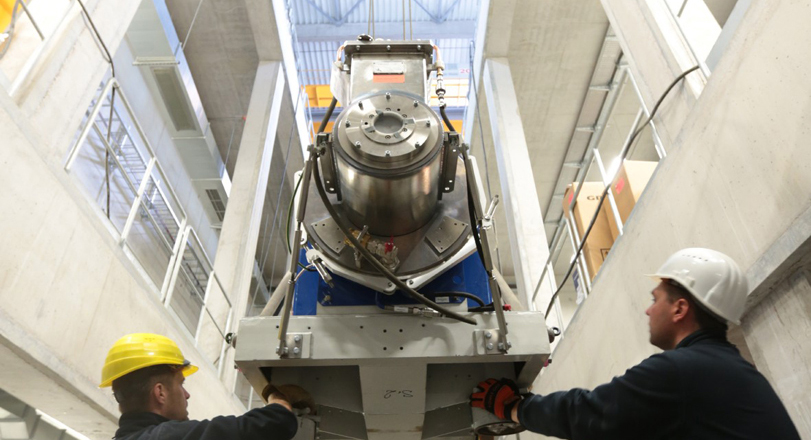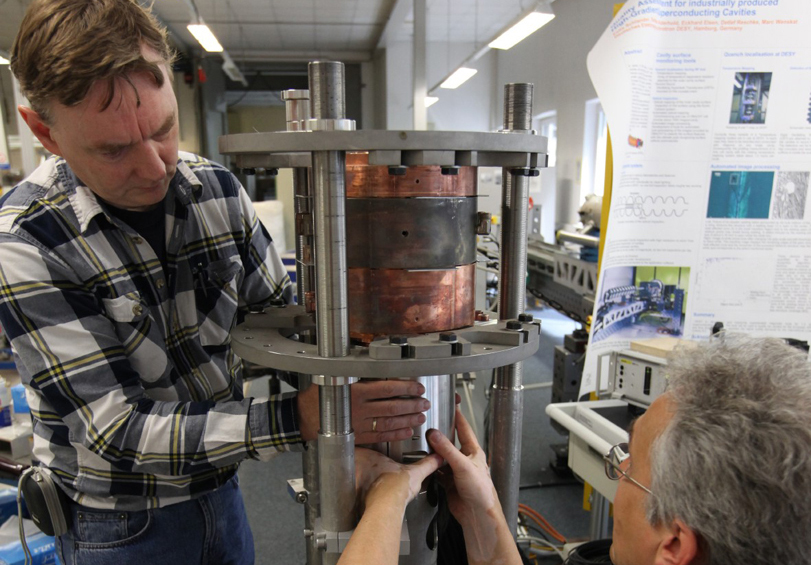Installation of the European XFEL injector begins
Scientists working to place electron injector at Bahrenfeld complex
The devices that create the electron beam necessary for producing the world’s brightest light flashes are beginning to find their place in Bahrenfeld.
The electron injector will fire the electron bunches needed to produce the X-ray beam into the accelerating section of the European XFEL. Currently, scientists and engineers at European XFEL’s injector hall are installing the different systems of the injector, many of which are uniquely tailored to produce a high number of intense X-ray flashes. DESY is building the injector as part of the German contribution to the European XFEL.

While other free electron laser facilities, such as LCLS in California and SACLA in Japan, can manage at most 120 X-ray flashes per second, the European XFEL will be capable of creating 27 000 flashes per second. To produce such numbers, the accelerator will need to generate the corresponding number of electron bunches per second, placing a much larger burden on the injector. To accommodate such extreme conditions, special technology had to be implemented, much of which was previously developed for the free-electron laser FLASH at DESY.
This special technology includes a high precision water-cooled electron gun, the first part of the injector. The electrons come from a negatively-charged electrode, a piece of caesium telluride, which is inside the electron gun at the tunnel entrance seven storeys underground in the injector hall. When exposed to a UV laser pulse, the electrons are ejected from the electrode surface and form a cloud called a bunch. A klystron, a device used to produce radio frequency (RF) pulses, powers a short normal conducting accelerator which pushes the bunch away from the electrode and injects it into the superconducting second part of the injector. A series of wave guides carry the RF pulse from the klystron at the third underground level of the injector hall to the electron gun.
“Right now, the infrastructure—electric power, cooling water, and air conditioning—is going to be finalized”, says DESY’s Frank Brinker, who is in charge of the injector’s installation. In the meantime, other DESY groups have started the installation of the klystrons, the wave guides, the modulators, and the pulse transformers. The teams are also building an interlock system at the tunnel entrance, which will protect personnel from radiation emitted by the electron gun during operation, as well as network connections, a control system, and the gun cooling system.
The electron gun will be installed in the injector hall in early October, and the team plans on testing the gun components later that same month.
“It’s exciting to finally install what has been developed for such a long time”, says Klaus Flöttmann, injector project leader at DESY.
